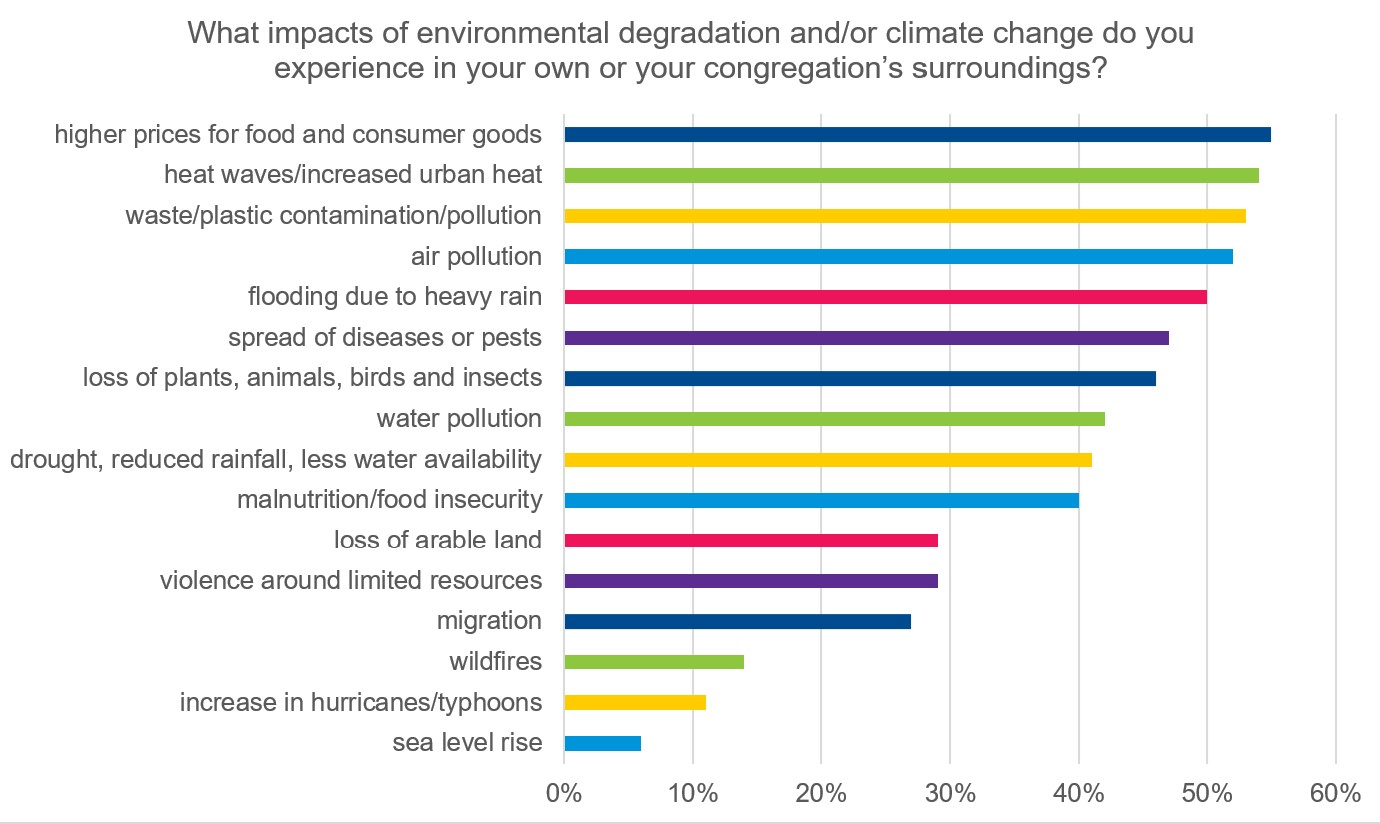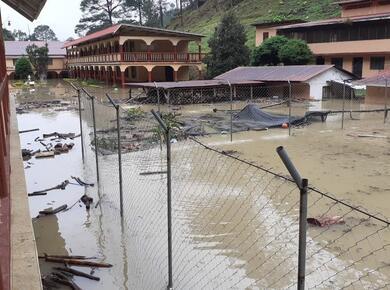“These repercussions had a negative impact on my personal life and that of other members of our congregation because they accentuated the already existing level of poverty in the church. The explosion in the price of food products disrupted consumption and created food insecurity in the homes of the faithful. Climate disruptions led to the loss of resources among congregational members, resulting in the inability of members of the congregation to respond to the vital needs of their families, especially the education of their children.
“We are living in a permanent state of frustration and fear...given the fact that we can be swept away at any moment by natural catastrophes and as a result of the food insecurity caused by climate change.”—Jacques Pilipili Mungwaere, pastor, Paroisse Adonai, Communauté des Églises des Frères Mennonites au Congo (CEFMC – Mennonite Brethren church), Bukavu/Sud-Kivu, DR Congo
As we enter the Season of Creation, these experiences related by Jacques Pilpili Mungwaere remind us of the many crises in our world that call us to heal our relationship with creation.
We identify three main lessons from the responses to the global Mennonite survey on creation care when asked
1. What impacts of environmental degradation and/or climate change are being experienced?
2. How do they impact their personal or congregational lives?
1. Environmental impacts affect daily lives
Almost all respondents (98%) experience at least one of the 17 environmental impacts that we asked about. The most common:
1. economic impacts (such as high food prices),
2. changes in climatic events (such as more heatwaves and flooding)
3. widespread pollution.
Interestingly, respondents focused less on two areas that often get more news coverage:
1. dramatic events such as wildfires or hurricanes/typhoons
2. large-scale, slow changes such as the sea-level rise and glacier melting.
Instead, they focused on impacts that affect their daily reality.

2. Least affluent areas are the most affected
Although almost everybody reports the presence of environmental degradation, there is a difference in how directly respondents feel that impact.
While a third or more of respondents from the USA/Canada and Europe said they were not affected yet by climate change, almost nobody in Asia, Africa, and Latin America reported this. Africa stood out as the region reporting the highest percentage of impacts. For instance, while 80% of African respondents reported higher prices for food and other goods due to climate impacts, only 9% of European respondents reported this. Not surprisingly, however, those in Africa also report being impacted by higher levels of food insecurity and malnutrition.
These responses emphasize what we already know: those least responsible for climate change are bearing the brunt of the effects.
3. Environmental problems intersect with other social challenges
We received a surprisingly diverse range of responses to open-ended questions. For instance, about 10% of respondents from Africa, Asia, and Latin America said that high temperatures or rainfall were negatively impacting their ability to get together as a church.
Environmental degradation has an emotional impact as well. About 10% of people in the US/Canada, Europe, and Latin
America said they are saddened or otherwise feel emotionally impacted by the degradation of the created world, even if it doesn’t have a direct impact on their livelihood.
And, after this summer’s heatwaves in North America and floods in Germany, patterns of responses may shift.
Other respondents linked environmental problems directly to social issues such as increased violence, decreased school attendance by children, mental health, and migration. All of these responses indicate that environmental problems can impact all facets of our lives and that we cannot think of these problems as separate from other important social challenges.
Originally from Mennonite World Conference
CCD reprinted with permission












